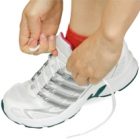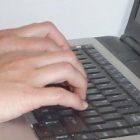Many of us have to spend a large proportion of our day at work, and whatever your job just think about how many days or hours you spend in a particular position or repeating the same activity. It is no wonder, therefore, that some of us end up with work-related pain.
However, there is usually a reason why symptoms start or become worse such as:
- longer hours – for example at your desk or behind the wheel of a vehicle
- increased stress levels which can highlight weakness or pain
- less time to exercise so you are unable to counteract any work strains
- a change in your working environment
This is where hands-on treatment can be so beneficial. We can help resolve those recurring aches and pains, thus making your working life a little easier.
Below is a list of common work related problems with which Osteopathy, Medical Acupuncture and Massage can usually help:
- shoulder and neck pain
- neck related headaches or dizziness
- muscle spasms
- mid or lower back pain
- sciatica and nerve pain
In addition to having Osteopathy, Medical Acupuncture or Massage, sometimes, to stop any reoccurrence or to ensure a full and lasting recovery, it may be necessary to work with Occupational Health and look at preventative exercises, which will help you to self-manage the problem.
CASE HISTORY
Patient: 30-year-old female office worker
Presenting symptoms: shooting pain, pins and needles and numbness in her right forearm with occasional pain in the neck
Previous History: gradual build-up over the last 3 years, but getting worse recently and aggravated by typing, carrying heavy shopping or resting on right arm. The patient had already undergone physiotherapy and seen a Consultant specialising in musculoskeletal injuries, who said it would be a self-resolving condition within 5 years. Patient got some relief from using a voice recognition programme to type.
Treatment: 4 treatments over a two month period which included soft tissue (massage) of the forearms, manipulation of the neck and ultrasound treatment to the muscle insertions around the elbow. This improved the patient’s symptoms but the aggravating factors also needed to be addressed. So management of the condition was:
- voice recognition programme for typing provided by patient’s work
- varying tasks at work
- good exercise programme
- maintenance treatment with Osteopath every 3-6 months
The patient found the above course of treatment and preventative measures to be very beneficial and it illustrates that sometimes a multi-disciplined approach is needed to manage a chronic problem.
Conversely, symptoms such as headaches, neck and back pain and postural problems can often respond just to Osteopathic treatment.
Please feel free to contact us if you wish to discuss further whether we can help you.








